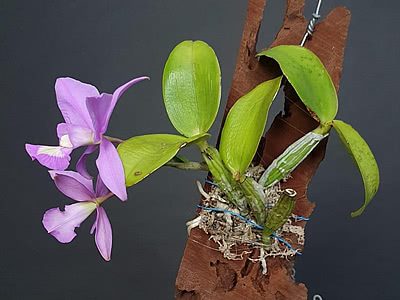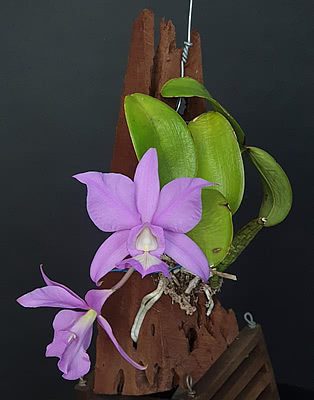The Noble Cattleya (Cattleya nobilior) Rchb.f., 1883, is a sympodial and epiphytic orchid, typical of the cerrado biome, where it grows near rivers, lakes, and water sources. In the cerrado, it occurs on small trees but prefers taller trees where increased ventilation reduces the temperature. The variety amaliae originates from Goiás and Tocantins (milder climate) at altitudes of up to 900 meters (2,953 feet), growing on trees with rough bark.
The genus name Cattleya is a tribute to William Cattley (1788 – 1832), an exotic plant cultivator, in whose greenhouses the first Cattleya labiata specimen flowered in European soil (1824). The species name nobilior derives from Latin, meaning noble or excellent. The variety amaliae was named in honor of the teacher, journalist, and orchid enthusiast Amália Hermano Teixeira (1916 – 1991) who discovered it.
The Cattleya nobilior is very similar to the Cattleya walkeriana, but it differs by being bifoliate, having a larger labellum throat with yellow nuances, and possessing three pronounced central stripes. The typical variety has pink hues, but there are also the varieties alba, semi-alba, coerulea, rubra, lilacina, vinicolor, and others. The flowering of the typical species occurs from July to August, while the Amaliae variety blooms between September and October. The floral stem is about 8 cm (3.15 inches) and emerges from a true pseudobulb, with 2 to 3 fragrant flowers 10 to 13 cm (3.94 to 5.12 inches) in diameter and are very long-lasting, remaining for 30 days.

In the cerrado, its habitat, there are significant thermal variations with temperatures ranging from 30 to 38°C (86 to 100.4°F) during the day, and 16 to 24°C (60.8 to 75.2°F) at night. Despite this, there are no significant temperature variations due to the seasons throughout the year, with a daytime minimum of 24°C (75.2°F).
Therefore, it is crucial to protect it from the cold on the coldest days of winter, especially if cultivated in subtropical to temperate climates. For this species, the recommended shading is 40 to 50%, with luminosity between 48,000 to 40,000 lux. During the rainy season, the air humidity is above 70%, and in the dry season, it ranges from 20 to 30% during the day, but at night, this humidity rises again due to the abundant dew in the mornings. In conditions of high humidity, regular ventilation is necessary.
It can be cultivated on wood stumps, trees, baskets, or pots. Prefer stumps with rough bark, preferably of hardwoods like peroba and cinnamon, with or without bark. Easy to grow on living trees, such as dracena and orange trees. In baskets, use a substrate of equal parts pine bark, charcoal, and crushed stone. If cultivated in a pot, leave a good drainage layer before adding the substrate, as it does not tolerate waterlogged roots. Also, use shallow containers, with little substrate for quick drainage.
During the growth period, water the noble cattleya every other day, checking if the substrate is dry. In humid times, reduce watering to every two days. As a fertilization suggestion, apply a solution of 2g (1 teaspoon) of soluble NPK fertilizer Peter’s 20-20-20, per liter of water, by foliar application weekly. Also, apply organic fertilization to the substrate once a month, sprinkling a teaspoon of AOSP type fertilizer over the surface. In its habitat, it blooms after a long dry period.
Thus, in cultivation, it requires “water stress” of approximately two months during winter. Lightly mist the plant once every 10 days, maintaining a minimum level of hydration and reduce fertilization in the period preceding flowering. On a large scale, propagation is done by seed or meristem, with laboratory care. In amateur cultivation, it can be multiplied by dividing the clumps, keeping each daughter plant with at least 4 healthy pseudobulbs.
Remember, the cultivation information presented here should be used only as a guideline and adapted to your environmental conditions. The climate of your region, the location where you cultivate your plants, how much time you have available for care, the type of substrate, and many other factors should also be considered. Only then decide on the cultivation methods that best suit you and your plants.


